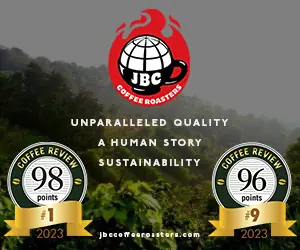The Italian-American cuisine encompasses the traditional menu of espresso drinks that was developed in Italian-American communities during the 1920s through 40s, moved from there into Bohemian and university communities via the American coffeehouse and its various offshoots during the 1950s, and by the 1960s had been taken up by the speciality coffee culture, that world of small boutique coffees roasters and burlap-decorated stores that has now grown to become a major part of the American coffee industry.
The Italian-American cuisine at first glance resembles the contemporary Italian. There are a few more choices on the menu: in particular the caffe latte and the caffe Mocha, or chocolate-espresso combination. Otherwise the list is similar: espresso, ristretto or short espresso, cappuccino, etc. The drinks are usually larger, and the servings of straight espresso most definitely larger. But what sets the two cuisines apart more than anything else is the style of the coffee. In the United States, with high-quality Arabica coffees cheap and widely available, espresso blends tend to be sharp and pungent. In Italy, where the cost of coffee is higher and coffee drinkers prefer to take their espresso without milk, the emphasis is on smoother, lighter-flavored blends based on lower-grown, smoother Brazil coffees and bland but full-bodied robusta beans. Finally, American espresso blends, particularly on the West Coast, tend to be roasted darker than the northern Italian norm, further accentuating the more rugged flavor profile of American espressos.
Perhaps the most striking difference between the two cuisines are the rituals that surround them in public places, rituals that affect, and in turn are affected by, technical and flavor factors. In Italy, every facet of the brewing and serving ritual is focused on what might be called the perfect swallow: The coffee is ground fresh, just before brewing; a small amount is brewed in about 25 seconds into a tiny, preheated cup; and then, before this little liquid jewel can cool or the delicate aromatics liberated by the brewing can evaporate, it is drunk, in a few rapid swallows.
By comparison, the Italian-American cuisine was developed and continues to thrive in a much more leisurely context. The American customers’ favorite drinks tend to be those that combine hot, frothed milk with the espresso coffee, so a serving lag between brewing and drinking is less important. For years these same customers were primarily artists, Bohemians, university students, professionals with irregular work schedules, etc., all of whom not only paid for an espresso beverage, but, in effect, rented a table as well, where they were free to read a newspaper, write a poem, work on a term-paper, or chat with a client in a comfortable and (depending on the social context) defiantly funky or nostalgically European atmosphere.










